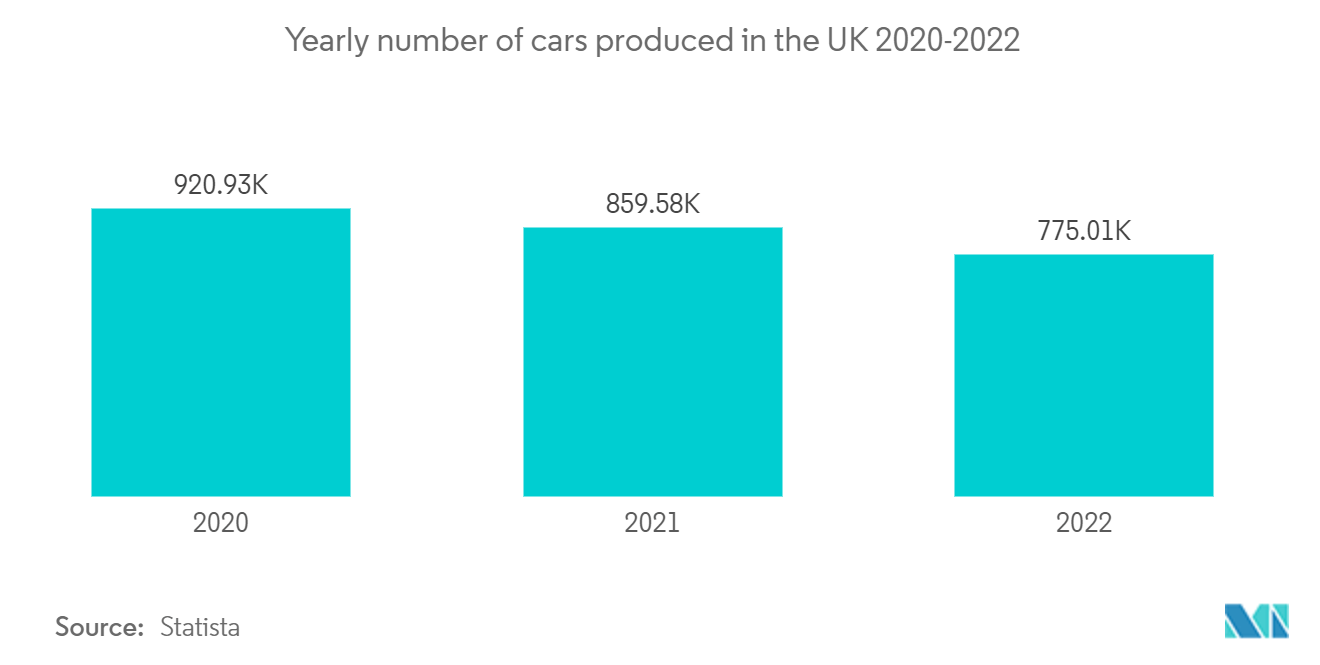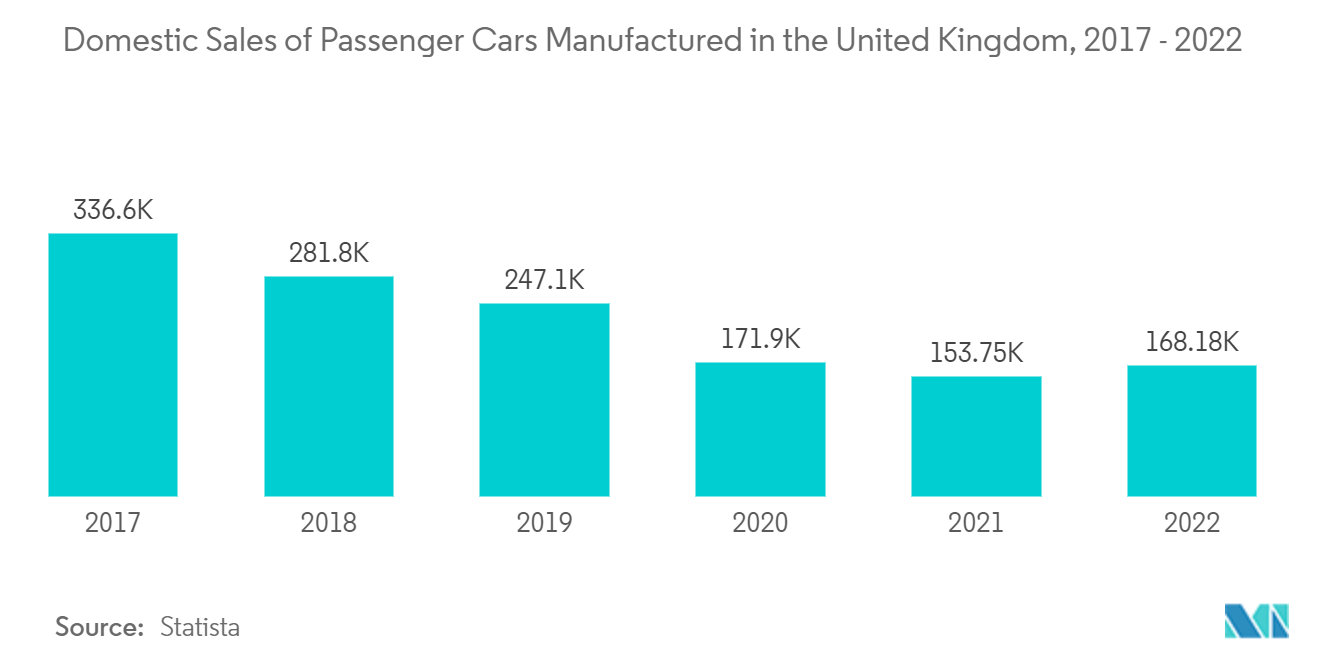Market Trends of UK Automotive Carbon Fiber Composites Industry
Increasing Adoption of Carbon Fiber in Exterior Segment
Among applications, the exterior segment is expected to lead the market of automotive carbon fiber in terms of value and volume. The growth of this segment of the market can be attributed to the increased demand from manufacturers to produce several exterior parts, such as fenders, hoods, bumper beams, and deck lids of vehicles. Furthermore, the growing car manufacturing and export industry in the country is also supporting the market growth.
Adopting carbon fiber increases the durability of vehicles, thereby ensuring a long life cycle of the parts and vehicle. The exterior parts of vehicles manufactured from composites also offer high stiffness, thereby, resulting in minimum damage to occupants in case of accidents.
Advanced materials such as carbon fiber are essential for boosting the fuel economy of modern cars all the while maintaining performance and safety. Since it takes lesser energy to accelerate a lighter object than a heavier one, lightweight materials offer great potential for increasing vehicle efficiency and fuel economy. A 10% reduction in the vehicle’s weight can transpire to a 6% to 8% increase in fuel economy. Major players are using exterior parts using carbon composites to reduce weight and improve efficiency.
- BMW and its carbon fiber producing partner the SGL Group, have spent close to USD 1 billion in establishing the supply chain for the CFRP used in the i3 and i8. Audi is also using carbon fiber to produce the rear wall of the space-frame for its A8 sedan. Even from the supply side, carbon fiber manufacturers have been ramping up their production capacities, which will further help in the adoption of carbon fiber in automobiles.

Passenger Car Segment to Hold the Majority of The Market Share
With the enactment of stringent emission norms and fuel economy standards in the European region, automobile manufacturers in UK such as BMW, Volkswagen, Audi, etc. have started using carbon fiber composites in the manufacturing of their vehicles.
The government is also aiding the industry growth with more supportive policies: investment in infrastructure; broader measures to encourage uptake of the latest, low and zero-emission cars; and long-term purchase incentives to help the country grow its share in the EV market. This is expected to bolster the market prospects for carbon composited for EVs during the forecast period. For instance,
- In January 2023, the United Kingdom government released a plan for smart electric vehicles which is likely to befit the electric vehicle users through lower energy bills. A new strategy outlines ways to realize the potential of smart electric vehicle charging, including enabling drivers to use the electricity of their electric vehicle to power their homes.
Companies are trying to invent new parts made of carbon fiber that can reduce the total weight of the vehicle to a great extent. The application of carbon-fiber-reinforced plastic (CFRP) has been widely adopted for the production of automotive bodies, particularly in hyper-car manufacturers such as Ferrari, Lamborghini, and Porsche.
The demand for carbon fiber is expected to increase during the forecast period, as companies are forming new partnerships and launching new carbon fiber technologies for the manufacturing of automotive components, in turn aiding in driving the growth of automotive carbon fiber in the European market.


